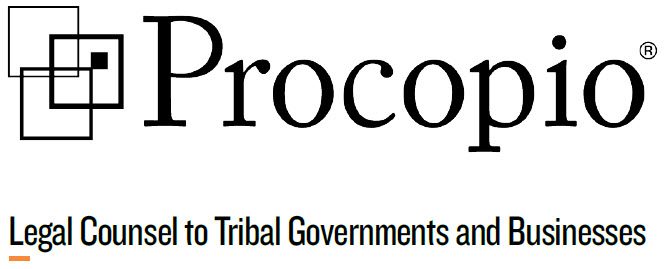By: Anna Hohag | Intern | anna.hohag@procopio.com
Theodore J. Griswold | Partner | ted.griswold@procopio.com
The first step to healing is to identify the problem of the injury. This is a simple, common sense idea that has been around since, well, forever. Some countries around the world are doing just that when it comes to implementing Indigenous policies.
Every year on May 26, Australia observes National Sorry Day, a day dedicated to reconciliation efforts between the Government and the indigenous people in Australia. Sorry Day gives people the chance to come together and move together towards healing for the Stolen Generations, their families and communities. Stolen Generations refer to Indigenous Australians who were forcibly removed from their families and communities as recently as today. Events include reconciliation walks and street marches, flag raising events (the aboriginal flag is a national symbol of Sorry Day), and speeches from community leaders, including indigenous Australian elders and educators. The Government publicly acknowledges the injury, the first step towards healing.
Similarly, Canada is in the midst of a public reconciliation movement and implementing policies reflecting that movement. Truth and reconciliation commissions are tasked with discovering and revealing past wrongdoing by a government in the hope of resolving conflict left over from the past. First Nations are being acknowledged and recognized.
Reconciliation movements in the US? None so far…
The United States has a long, tragic history of failed Indian policies since the time of contact with the indigenous peoples of this continent. Generations after Indian removal and assimilation policies—like the widely infamous “Trail of Tears” and the forceful removal of Indian children from their families and communities to Indian boarding schools—the General Allotment Act, and Termination policies, the United States has never implemented a public reconciliation policy. This type of public admission of generations of wrongdoings to Native Americans would provide absolutely essential education and awareness to the rest of the U.S. population. This would not only debunk the myriad negative misconceptions of Native people and tribes today, but would positively affect the ways in which laws and policies are made by creating a collective conscience regarding the potential effects on Indian Country. It might even correct the myriad of misleading lessons in our education system.
While there is no formal reconciliation movement, there are alternative ways that the U.S. government, using law, has recognized injustices done to Tribes by past failed policies. One example, is through the Indian Reorganization Act (IRA) of 1934.
The IRA established among many other things, an avenue for restoring a small percentage of lost tribal lands. As a result of disastrous policies like as the General Allotment Act (Dawes Act of 1887), tribal lands across the country were surveyed and divided into individual allotments for individual Indians, with the remaining tribal lands – the “surplus land”—opened up for non-Indian settlement. The result was devastating to American Indians. The General Allotment Act caused Indian land holdings to plunge from 138 million acres in 1887 to 48 million acres by 1934 when allotment ended. That’s a loss of about 90 million acres of Indian land simply at the hands of one allotment policy. Not only did the enactment of the IRA put an end to allotment, but it also provided an avenue for restoring tribal lands through the Fee-to-Trust process. Having fee simple lands transferred into federal trust status is a powerful tool for making reservations whole and protecting Indian lands for future generations. When fee lands are returned to trust, Indian nations and people begin to eliminate the checkerboard pattern of trust and fee lands and regain control of lands on the reservation.
Still Tribal governments face opposition to fee to trust transfers, with municipalities claiming that they “lose” in the transaction, by admonished tax base. But is it a loss? No, it should be considered a return to Native hands. This type of more correct understanding may be another result if the federal Government took that simple step that other countries have taken – saying it is sorry.
Anna is a citizen of the Bishop Paiute Tribe and born and raised in the Eastern Sierras in Bishop, CA. She is entering her second year of law school at the James E. Rogers College of Law at The University of Arizona. She is a Board Member on the California Indian Law Association and the 2015-2016 National NALSA Area 1 Representative. Before attending law school she worked for the Pala Band of Mission Indians as the Tribal Liaison. Anna is a recipient of the 2015 Procopio Native American Internship.
Ted is head of the Native American Law practice group and primary editor for the Blogging Circle. Connect with Ted at ted.griswold@procopio.com and 619.515.3277.
 Gabriela is an attorney with the Native American Law Practice Group and citizen of the Cahuilla Band of Indians. She graduated from the James E. Rogers College of Law at the University of Arizona in 2015 and was recently admitted to the State Bar of California.
Gabriela is an attorney with the Native American Law Practice Group and citizen of the Cahuilla Band of Indians. She graduated from the James E. Rogers College of Law at the University of Arizona in 2015 and was recently admitted to the State Bar of California. Ted is head of the Native American Law practice group and primary editor for the Blogging Circle. Connect with Ted at ted.griswold@procopio.com and 619.515.3277.
Ted is head of the Native American Law practice group and primary editor for the Blogging Circle. Connect with Ted at ted.griswold@procopio.com and 619.515.3277.